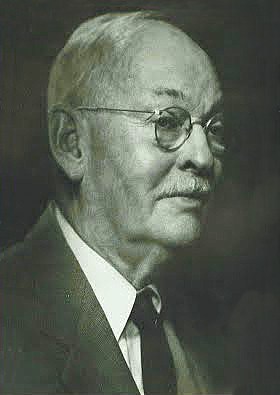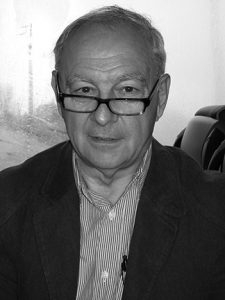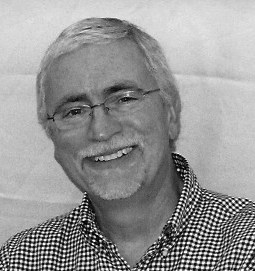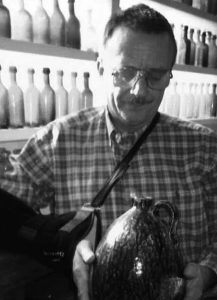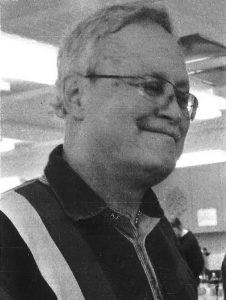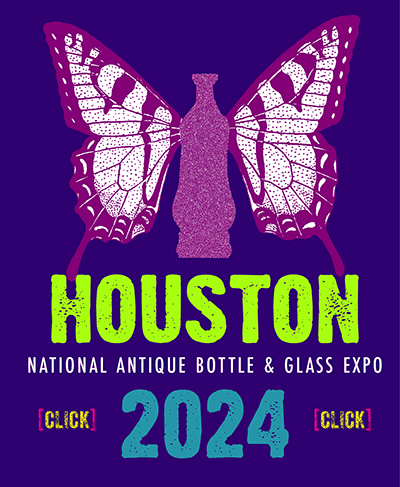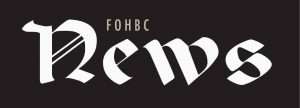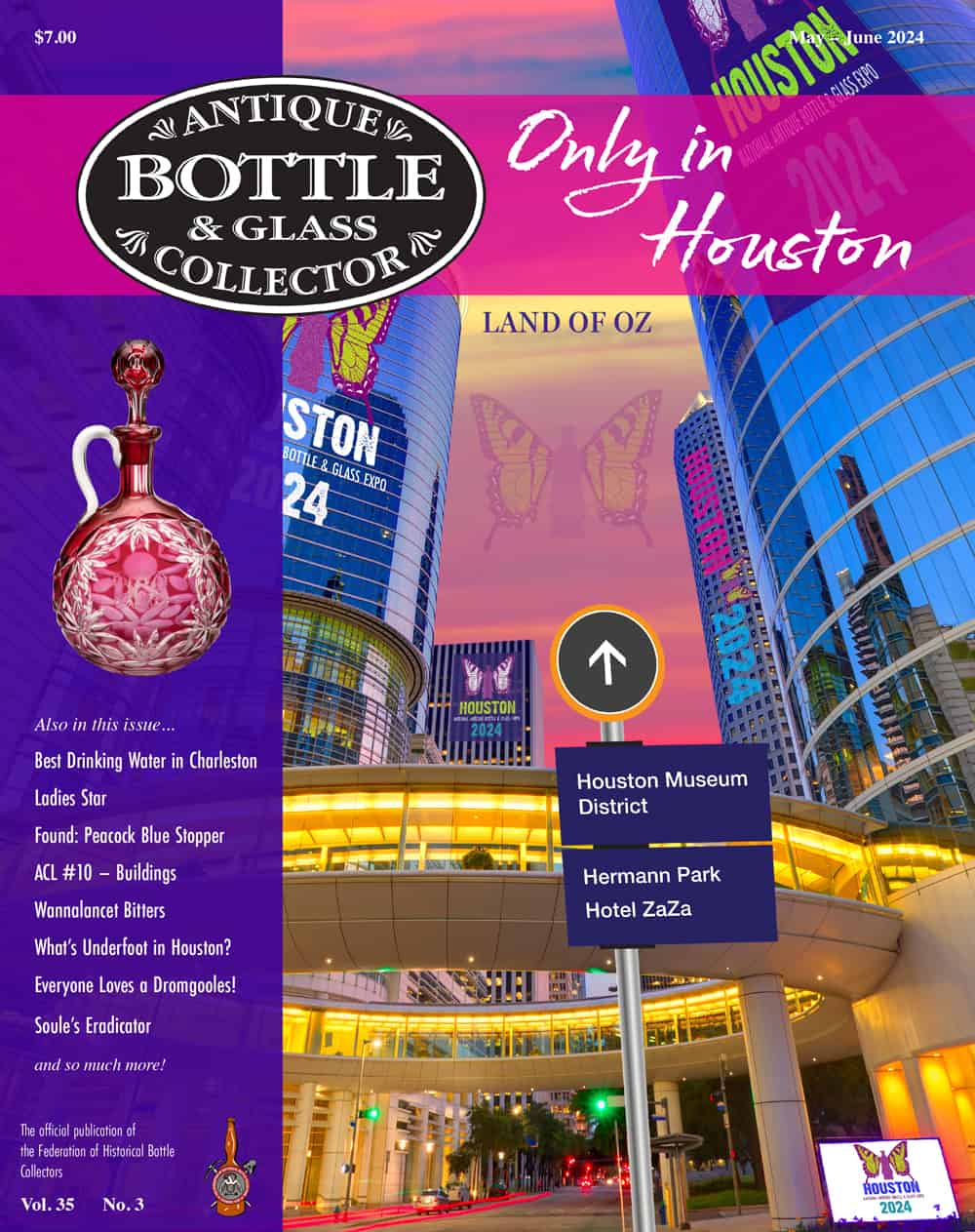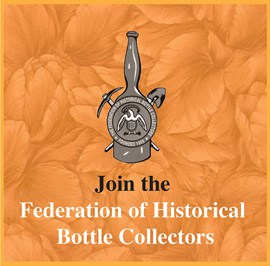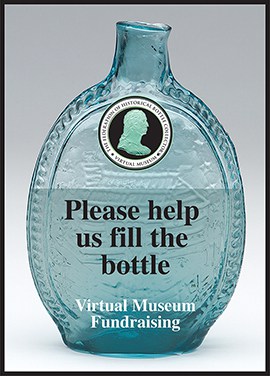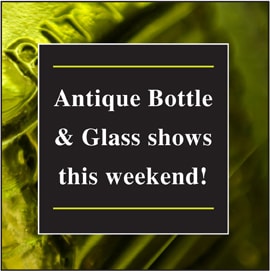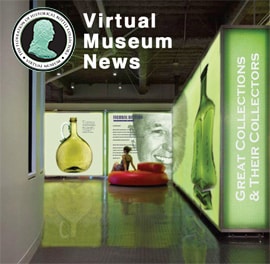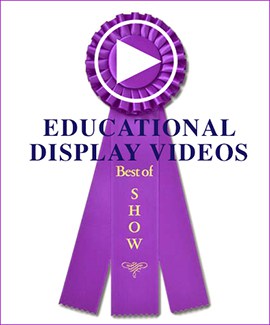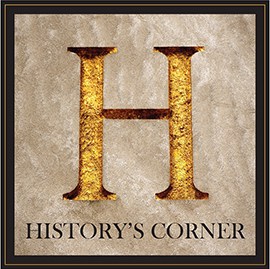Updated 04 February 2019
The Honor Roll award of the Federation of Historical Bottle Collectors is designed to honor individuals, living or deceased, who have made significant contributions to the hobby of collecting bottles. The Honor Roll recognizes individuals who have significantly contributed to local, regional or national enhancement of bottle collecting above and beyond normal collecting. Consideration for this honor is to be based only on the contributions to the bottle-collecting hobby. Other attributes such as professional career or positions are not to be considered.
Read and Download: Honor Roll Guidelines and Requirements Application Form
Read and Download: Honor Roll Procedure for Nomination
On July 25, 1986, Dr. Cecil Munsey, of Poway, Calif., sent a memo to Marilyn Schmieding, FOHBC Western Region representative, that the FOHBC “seriously consider establishing an ‘HONOR ROLL’ of people who have contributed significantly to bottle collecting. The Honor Roll would not replace the Hall of Fame, the greatest honor the hobby can bestow, but only supplement it.” The FOHBC Board of Directors adopted the idea and it was put into place the following year.
1987
The following were nominated by The Ohio Bottle Club, Gary Beatty, President. Research was conducted by Paul Ballentine, Springfield, Ohio, and Gary Beatty, Galion, Ohio. “The Reward of True Excellence is to Obtain Honor.” The list was updated with capsule comments on each honoree (when available) by Southern Region editor Bill Baab during 2008-2010, with help from Mary Ballentine, Sheldon Baugh, Ralph Finch, Norm Heckler, Cecil Munsey, Richard Siri, Dick Watson, Ralph Van Brocklin, Bruce Silva and Garth Ziegenhagen.
George S. McKearin, co-author (with daughter Helen) of American Glass, noted authority on early American glass in general, not just bottles.
Malcolm Watkins and Lura Woodside Watkins. He enjoyed an extensive career at the Smithsonian Institution, was curator of several collections including ceramics and glass. He was a pioneer in the field of historic archaeology. Lura, his mother, was a pioneer in the study of American cultural history, and collected extensively at New England’s unexplored pottery kiln sites. She later donated her collection to the Smithsonian. She was the author of Cambridge Glass, 1818-1888, The Story of the New England Glass Company.
Stephen Van Rensselaer, one of the earliest individuals to collect and study early bottles (1920s). His Early American Bottles and Flasks was published in 1926. It was revised in 1929. His research for the time was nearly impeccable, since he was able to interview “former glassblowers, their wives, relatives and others who were familiar with local history and tradition.” The book was reprinted in 1969.
Otha Wearin was a congressman during the early Franklin Delano Roosevelt administration, and became an authority on figural bottles. He authored a book called Statues That Pour.
James Gabel, early collector.
Ezra Feinberg, early collector.
Edgar F. Hoffman, of Maplewood, N.J., was a collector in the 1930s-50s who specialized in historical flasks, although he collected others such as bitters, sodas and figurals, according to his early 1950s correspondence with prominent Alabama collector Doy McCall. Hoffman became an expert on early glass and sold some to prominent collectors such as Charles B. Gardner of New London, Conn.
James H. Thompson was the author of Bitters Bottles (1947), the first specialty bottle book. He cites George McKearin, Sam Laidacker and Charles B. Gardner among the list of contributors to the book, which describes 500 bitters, as well as “amusing lore of the Bitters Era.”
Neil C. Gest, Mechanicsberg, Ohio, was a flask collector, researcher, writer, contributor to The Magazine Antiques. He was well-known for collecting rare Midwestern glass. He co-wrote (with Parke G. Smith) a feature story on glassmakers Johann Baltazar Kramer and his son, George, in the March 1939 issue of The Magazine Antiques. The Kramers were associated with the Stiegel factory and those of Frederick County, Maryland, particularly Amelung, and with the New Geneva and Greensboro works. Gest also wrote the foreword to the Parke-Bernet auction catalog describing the early American glass collection of William W. Wood III of Piqua, Ohio, in 1942.
Frederick W. Hunter, collector and archaeologist of the Harry Hall White type.
Lowell Innes was one of the country’s foremost experts and museum consultants on 19th century American glassmaking. As the leading authority on Pittsburgh glass, he wrote many articles and lectured widely on the subject. He was responsible for the first public exhibitions of Pittsburgh glass in the early 1940s. Author of the book, Pittsburgh Glass 1797-1891. He died in 1985.
Rhea Mansfield Knittle was a prolific author and early authority (1920s) on glass, silver and pewter. She was one of the founders of and contributors to The Magazine Antiques from its inception in 1923. One of her books was Early American Glass.
Maude Wilkerson owned a “Mom and Pop” motel and operated a bottle museum in Camdenton, Mo., and was a contributor to Old Bottle Magazine for many years. Guests at her motel could enter the museum in an adjacent building for free. Bottles were displayed in cases around a room and many early bottle collectors went out of their way during the 1960s-70s to see what she had. She and Honor Roll honoree Otha Wearin were good friends and made many bottle trades over the years. After she died, some 1,900 items were moved to Skinner’s auction gallery in Bolton, Mass., and an auction was held there in 1976. Numerous glass candy containers were among the items sold.
Edwin Atlee Barber was an author who recognized the importance of early ceramics. Among his books was one about lead-glazed pottery written in the 1930s. He also authored one on early American bottles. He also authored American Glassware Old and New. It was published in 1900.
Ruth Webb Lee authored books on antique fakes and reproductions, Victorian glass patterns, Sandwich glass and early American Pressed Glass, most published in the 1930s-40s.
George Horace Lorimer was an early editor of The Saturday Evening Post. It was published weekly in Philadelphia and its origins dated to Benjamin Franklin’s day. The Post was the most prominent magazine in Philadelphia along with Collier’s. He did publish (on Oct. 16, 1929) Edwin Lefevre’s story, “Why I Collect Empty Bottles.” Lorimer started collecting during the early 1920s, mostly great historical flasks and diamond-daisy types. His collection was donated to the Philadelphia Museum of Art and is always partially on display. His philosophy on money was reflected in a quote published by investment firm Charles Schwab in the fall of 2009: “It’s good to have money and the things money can buy, but it’s good, too, to check up once in a while and make sure you haven’t lost the things that money can’t buy.”
Charles Baugh, with his wife, Roxy, of Menton, Ohio, pieced together a collection of early American glass that ranked at the top in rarity, condition, perfection of form and workmanship. The Baughs also made a thorough study of the fields in which they were interested.
Crawford Wettlaufer became an authority on early American glass and never hesitated to share his knowledge and collection, which contained many rarities, with other collectors.
Dale Kuhn, of Ohio, was a pharmacist who had amassed a wonderful collection of glass that eventually was sold by Garth’s auction house near Delaware, Ohio. The sale gave modern collectors an opportunity to buy treasured items that previously had not been available. There were no bottle shows during his era and the only recourse collectors had was to buy from some of the many lists sent through the mails, or advertised in the antique journals.
Earl Seigfreid. Early collector.
Parke G. Smith was a collector and authority on early American flasks. He authored bottle-related stories in The Magazine Antiques (See Neil C. Gest) and other publications during the 1930s and 1940s.
Edwin LeFevre was an early collector of bottles. His main claim to fame came when he authored a story, “Why I Collect Empty Bottles,” in the Saturday Evening Post of Oct. 16, 1929.
Charles McMurray was a well-known antiques dealer in Dayton, Ohio. He wrote articles for local newspapers and in 1927 published a small black handbook on bottles, using items from his own collection for the photos. In 1970, a Connecticut bookseller sent out a list of bottle books for sale. On the list was a small black handbook the bookseller said was authored by Charles B. Gardner and himself. Turned out that Gardner had only priced the bottles in the book, which was nearly identical in every way to McMurray’s 1927 book.
Sam Laidacker was the author of two excellent books on blue China dishes. He also published a small magazine or paper on antiques in general. He operated an antiques shop in Bristol, Pa., and was considered an authority on antique bottles. He relocated to Bloomsburg, Pa., in the late 1960s and continued to deal from a large mansion and carriage house. His father was collecting flasks and Kentucky rifles in the early 1900s. His brother, John, had 1,000 historical flasks to sell in the mid-1960s. Sam’s son, Jack, became an authority on guns and military medals and an author on the subject. Sam also did cataloguing for many of the prominent auction houses across the country. He helped FOHBC Hall of Famers Dick and Elma Watson develop an expertise in antique bottles and sold them many that became the foundation for their extensive collection.
1991
Dr. Julian Harrison Toulouse was a student of glass containers for more than 30 years. He was chief engineer and manager of quality control and operations research and later consultant to the Owens-Illinois Glass Company. He was chief of the glass container section of the War Production Board during World War II. He was the author of Fruit Jars: A Collector’s Manual, in 1969 and Bottle Makers and Their Marks in 1971.
1992
Ron Fowler was born in 1947 and is retired from the SAFECO Insurance Co. He became interested in bottles and their histories while serving as manager of the Triple R Ranch in Olympia, Wash. He discovered the ranch’s dump and excavated it over a period of several years. The bottles he uncovered he did research on. He maintains a worldwide correspondence with fellow bottle collectors. He was a monthly columnist for Old Bottle Magazine from 1983 to 1986. The author of six books on bottle collecting, he received FOHBC awards for research and editing. He established the Hutchinson Bottle Collectors’ Association in 2007 and continues compiling data while documenting the existence of more than 15,000 Hutchinson bottles.
1993
Lew and Lois Roach were from the original group of pioneer western collectors from Sacramento, Calif. They put together a marvelous collection of label-under-glass back bar whiskeys and Lew became the authority on that variety. Lew designed, printed and hand-colored the first multi-colored show poster in 1968 for the Golden Gate Historical Bottle Society Inc. The show was held in Alameda, Calif., May 25-26. After the show, the poster was presented to FOHBC Hall of Famer Dr. Cecil Munsey, one of the poster’s admirers.
1995
Judge Edward S. MacKenzie began collecting by accident in 1959 during recuperation from a heart condition. His physician had ordered him to take walks and the judge found a few old bottles en route and became curious about them. Inspired by his wife, Romie, he and she eventually put together one of the finest general bottle collections in the world in their Brooksville, Fla., home. The collection had eventually grown to more than 7,000. The first of a series of auctions was conducted by Norm Heckler Sr., on Oct. 7, 1994. “This collection coming on the market carries the same weight, is similar in importance, as the glass collections of Charles Gardner, Edmund Blaske and even Paul Richards,” Heckler noted. MacKenzie died in 1994.
Kenneth M. Wilson was an early collector, book author and distinguished glass expert. He was the director of collections and preservation at Greenfield Village and the Henry Ford Museum. He teamed with the famous Helen McKearin to write American Bottles & Flasks and Their Ancestry (1978), an update of George S. and Helen McKearin’s 1941 classic American Glass. Wilson also authored New England Glass and Glassmaking on his own.
2000
Sam Taylor was a pharmacist and member of the St. Louis Bottle Club. He had one of the best collections of pharmaceutical items in the U.S. He transformed his basement into an early drug store atmosphere, displaying his great collection. Supported by his wife, Eloise, he shared his enthusiasm by inviting numerous collectors who happened to be in the area into their home and shared their hospitality and tremendous knowledge. It was like stepping into an early drug store of the past if you were lucky enough to be invited. The Taylors, who had no children, frequently attended the Mansfield, Ohio Bottle Show and stationed themselves near the front entrance. They were easily identified by their traveling companion, “Edith,” a full-blooded English bulldog of massive proportions, who spent most of her time sleeping behind their tables. When the dog passed away, she was mourned by all the collectors who had come to know her.
2001
Robert Eugene (Bob) Barnett was born in Kootenai, Idaho on August 27, 1921 and was bitten by the bottle bug later in life than most, becoming active in the hobby about 1970. He specifically liked Western whiskies. He enjoyed what he called “a revolving collection,” buying and selling large numbers of bottles, most of which never stayed on his shelves more than a month or two. During the early 1970s, Bob and his wife, June, became permanent fixtures at just about every show west of the Rockies, He also began to mail monthly lists of western whiskies to an ever-growing number of collectors. His reputation for honesty, integrity and fairness was legendary. In 1979, Bob parlayed his vast knowledge into publishing his first book, Pacific Coast Whiskey Bottles. He published Western Liquor Bottles in 1987 and Western Whiskey Bottles in 1992 and 1997. He died June 4, 2007 in Lakeview, Oregon.
John Thomas was a collector, researcher and historian whose efforts contributed very significantly to the understanding of Western whiskey bottles as well as bottle collecting in general. He is perhaps best known among collectors for his research and publishing of Whiskey Bottles of the Old West (1969). His next book was Picnics, Coffins, Shoo-Flies (1974). He also authored Whiskey Bottles and Liquor Containers from the State of Washington and Whiskey Bottles and Liquor Containers from the State of Oregon (1998). His longtime hobby was the collecting of Western whiskey bottles, shot glasses and related advertising. He was a significant factor in creating a broad interest in the history and collecting of these bottles through his contributions to the hobby. He died in 2000.
2003
Neal and Mary Jane Ferguson, of Nashville, Tenn., were early collectors who in 1965 founded the Middle Tennessee Antique Bottle Club in Nashville. They were life members of the Federation. Quiet and unassuming, Neal was a driving force in the antique bottle hobby in Tennessee and an acknowledged expert on Nashville bottles. His special interests included Nashville sodas and he conducted extensive research into the Diehl and Lord, Ottenville and McCormack companies. He wrote many articles for his club newsletter as well as for the Federation. Mary Jane was a constant help to her husband and was involved in all aspects of the Federation and the hobby with him. She was Southern Region editor of the Federation until ill health forced her to retire during the 1990s.
Willy Van den Bossche was born in Belgium in 1943 where he graduated in industrial engineering in 1967 and then specialised in glass technology. For two years he worked as a Chief Plant Engineer in the bottle making industry in Antwerp (Belgium) where he started collecting bottles. From 1971 until his retirement he worked as a Chief Patent Examiner in the field of glass technology at the European Patent Office (EPO) in Holland where he searched more than 4,000 glass patent applications world-wide. In 1999, he authored the International Patent Classification in the field of Glass Technology (C03B) for the World Intellectual Property Organization (WIPO). For more than 50 years he has been a pioneer and a serious collector of European antique glass bottles (1500-1850) and utility glass, as well as all literature on glass, the art of glass and glassmaking from all over the world. In 2001, after capping 12 years of research and development, he authored his first major reference work Antique Glass Bottles – Their History and Evolution (1500-1850) – A Comprehensive, Illustrated Guide – With a World-wide Bibliography of Glass Bottles (440 p. with 770 European bottles, jars and seals illustrating in full colour his entire private bottle collection). In 2012, he authored his second major reference work Bibliography of Glass: From the Earliest Times to the Present (347 p., 3,426 titles) spending 10 years for preparing this book in four languages (English, French, German and Dutch). His most important glass library (4,200 books) contains all the significant literature devoted to antique glass and glass bottles world-wide in all languages. Willy is a member of several international associations for the history of glass including the Glass Comity of the International Council of Museums (ICOM/Glass). He has lectured and written many articles on antique bottles and glass. He retired in 2003 and lives in Belgium. Updated 16 January 2019.
2005
Frank Sternad is a graduate of the University of Southern California School of Pharmacy. He has worked as a community pharmacist for 40 years. He is a historian who has studied and written about medicine for a number of publications, including those that specialize in collecting antique bottles. He has consulted with many collectors and is known for his vast knowledge of patent and proprietary medicine histories.
2008
Katie Foglesong was a charter member and sparkplug of the Iowa Antique Bottleers. She also was an early secretary of the Federation of Historical Bottle Clubs (later Collectors) and privately published an entertaining little book, Trials and Trails of a Bottle Collector.
Steve Ketcham began collecting antique bottles, advertising and stoneware in 1967 while still in high school. While attending the University of Minnesota, he began digging for bottles along the Mississippi River banks near the campus. He became charter member No. 11 of the North Star Historical Bottle Association in 1970 and a couple of years later joined Minnesota’s First Antique Bottle Club. He began attending regional meetings of the FOHBC in 1973, later serving as assistant chairman and then chairman of the Midwest Region. He established the Federation’s writers’ contest and served as chairman for several years. He was Federation president from 1982-84 and served on the board from 1982-98. A prolific writer, Steve contributes articles to Bottles & Extras and Antique Bottle & Glass Collector.
2010
The contributions to the bottle collecting hobby by Scott Grandstaff and Kitty Roach commenced in 1988 when the magazine Bottles & Extras took form on the kitchen table of their home in Happy Camp, California. With the help and support of FOHBC Hall of Famer Dr. Cecil Munsey, of Poway, California, they published their first edition in 1989. In 1995, when the publication had grown too big for both of them, they decided to turn over the magazine and subscribers list to the FOHBC at no charge. Bottles & Extras today has become the Federation’s most tangible asset.
Native Californian Jeff Wichmann has been a collector of antique bottles for more than 40 years. In 1990, he established Pacific Glass Auctions, changing the name in 2001 to American Bottle Auctions. His was the first bottle auction house to provide full-color glossy catalogs sent to collectors at no charge. Other innovations that benefitted collectors included launching the first online antique bottle auction. He published American Bottle Auctions a website loaded with news and features of interest to collectors. His bottle photography is considered by many to be the best in the business. In 1999, he published The Best of the West – Antique Western Bitters Bottles, considered one of the top resources for researchers.
2016
Thomas William “Tommy” Mitchiner. The antique bottle collecting hobby for Tommy Mitchiner, of Gordon, Georgia, started in 1966 following a newspaper article about people digging in Savannah, Georgia and finding lots of John Ryan sodas and other bottles. Between that year and 2013 when he passed away, Mitchiner had become Georgia’s most famous bottle collector and had amassed a huge collection of John Ryan sodas, many in rare colors, that was never duplicated. He became known as “the King of John Ryan Soda Collectors.” In addition, he conducted lots of research in the days before the Internet and became well known throughout the Southeast as an authority not only on Savannah and many Georgia bottles, but hand-painted marbles and figural smoking pipes, most of which he dug from hundreds of privies in the coastal city. He willingly shared that hard-earned knowledge with any collector who asked. Mitchiner also had become an expert in cleaning dug bottles and many a collection owes its brilliance to that expertise.
2017
Jon Landers. The hobby of collecting antique bottles attracts many people from all walks of life. After joining, many seem to disappear off the face of the earth, never to be heard from again. That isn’t true for Jon Landers, of Utica, New York. Not only was he a founding father of the Mohawk Valley Antique Bottle Club in 1994, he also holds active membership in many other bottle clubs and historical societies and organizations. Once he started his collections of local bottles, he decided to investigate the histories behind them: Who made them, when and where? Answers to some of his questions weren’t immediately forthcoming so that meant Jon, with the support of his wife, Sue, had to spend much of his free time pursuing documentary evidence at sources such as libraries and newspaper archives. One of his outstanding efforts dealt with the history of the Mount Vernon Glassworks of which he has become an authority. He soon learned that research is an important part of the antique bottle hobby and was thrilled to find answers to questions that had eluded him. That research led him to the stories behind bottle-related businesses and the people who had developed them. Best of all, Jon shares each bit of information with fellow collectors by writing and posting stories in his club’s newsletter, “Bottles Along the Mohawk,” which he has edited since the club’s founding. He’s never missed an issue during those 22 years. He also helped develop www.mohawkvalleybottleclub.com, the club website.
EDITOR’S NOTE: There are a few nominees about whom little is known. Anyone knowing their backgrounds is encouraged to get in touch with the FOHBC.

